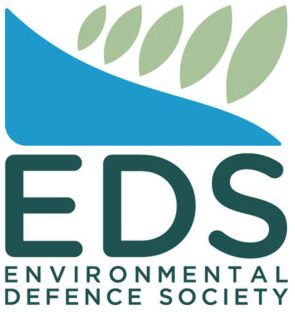Litigation Challenges Conservation Plan For World’s Rarest Dolphin
The Environmental Law Initiative is taking the Minister of Oceans and Fisheries to court over the Hector’s and Māui Dolphin Threat Management Plan, saying it fails to adequately protect the dolphins from being killed by fishing.
“Māui and Hector’s dolphins were once the most common dolphins in New Zealand waters until their rapid decline due to fishing-related deaths,” says ELI’s director, research and legal, Dr Matt Hall.
There are only an estimated 54 Māui dolphins over 1 year of age left. The population has rapidly declined from an estimated 2000 individuals fifty years ago.
“Because there are so few Māui dolphins left, even one death is considered a catastrophic event to the population viability. They need intensive conservation effort to prevent their extinction,” says Hall.
Hall says that a credible Threat Management Plan must effectively restore Māui and Hector's populations so that they are no longer threatened.
Hector’s dolphins have also declined rapidly, from an estimated 50,158 in 1975 to the current estimate of 15,000 individuals.
In June 2020, Minister for Oceans and Fisheries Stuart Nash issued a final decision on the Hector’s and Māui Dolphin Threat Management Plan, which was developed over four years under the Fisheries Act.
ELI alleges that the plan is based on a range of decision-making errors, which collectively fail to protect Hectors and Māui dolphins from being killed by fishing.
The Threat Management Plan focused on set nets and trawl nets as the two major fishing methods that pose risks to Māui and Hector’s dolphins.
Hall says, “The measures in the plan don’t add up to effective protection.”
Plan protects only a limited amount of Māui habitat
ELI alleges that what should have been one of the strongest features of the Plan, the Fishing-related Mortality Limit, was applied too narrowly and omitted known Māui dolphin habitat.
“They got it right in the sense that fishing should stop as soon as a single Māui dolphin is killed. But there are large areas where we know Māui dolphins travel to, but there is no mortality limit in place,” says Hall.
Monitoring failure
Fisheries NZ’s advice said that any Fishing Related Mortality Limit implemented would require 100% monitoring of fishing methods that pose a risk of capture.
ELI says that despite that, camera coverage of these fisheries is still far less than 100 percent and the observer coverage in some areas for the trawl and set net fisheries has been reduced to zero.
“The result is, we just don’t know whether the mortality limit is being implemented properly or not.
“The government hasn’t done all they can to prevent these dolphins from going extinct. With such low numbers left, we must get this right.”
The case will be heard in the High Court, with the hearing date yet to be fixed.
Notes:
The Māui dolphin is a subspecies of the Hector’s dolphin, having split away from the Hector’s population 15,000 - 16,000 years ago.
Māui dolphins are predominantly found on the west coast of the North Island of New Zealand. Māui’s dolphins were once found along most of the west coast of the North Island from Cook Strait to Ninety Mile Beach. Now they are limited to Maunganui Bluff to Whanganui.
Hector’s dolphins are primarily found around the South Island.
The 2020 Threat Management Plan included measures that were developed for different fisheries areas including:
West Coast North Island (WCNI);
East Coast South Island (ECSI);
South Coast South Island (SCSI).
The Fishing Related Mortality Limit applies to a delineated Māui Dolphin Habitat Zone and follows the boundary of the territorial sea (12 nautical miles) and extends from Cape Egmont to Cape Reinga (Te Rerenga Wairua).
However, the briefing also acknowledges verified Māui dolphin sightings and historical records of Māui dolphins in the “southern habitat zone” from Cape Egmont to Wellington and that dolphin distribution is also recorded beyond the 12nm limit.


 Gordon Campbell: On Marketing The Military Threat Posed By China
Gordon Campbell: On Marketing The Military Threat Posed By China E tū: Journalists Respond To Grenon - Still No Commitment To Editorial Independence
E tū: Journalists Respond To Grenon - Still No Commitment To Editorial Independence Marlborough District Council: Kevin Judd Named Marlborough’s Newest Living Cultural Treasure
Marlborough District Council: Kevin Judd Named Marlborough’s Newest Living Cultural Treasure Parliamentary Commissioner For The Environment: Are We Planting The Forests We Need?
Parliamentary Commissioner For The Environment: Are We Planting The Forests We Need? Te Uru Kahika: Environment Report Demonstrates Critical Role Of Regional Science In New Zealand’s Future
Te Uru Kahika: Environment Report Demonstrates Critical Role Of Regional Science In New Zealand’s Future NZCTU: Transformative Policy Vision For Aotearoa
NZCTU: Transformative Policy Vision For Aotearoa Sensible Sentencing Trust: Greens Claim Intellectual Property Rights And Demand Changes To “Defund The Police” Billboards
Sensible Sentencing Trust: Greens Claim Intellectual Property Rights And Demand Changes To “Defund The Police” Billboards


